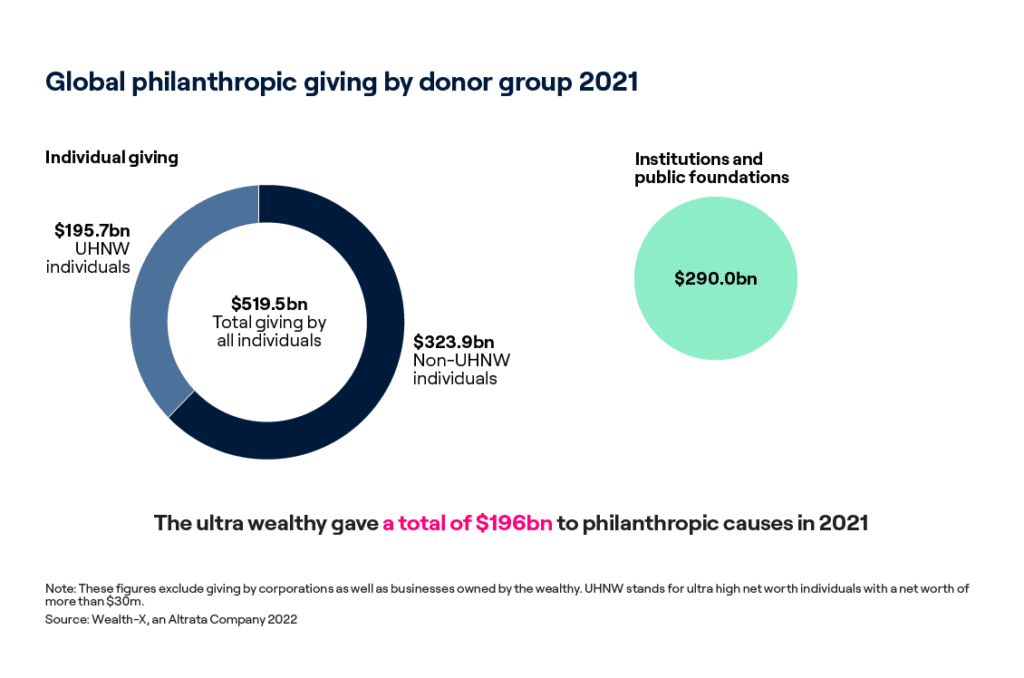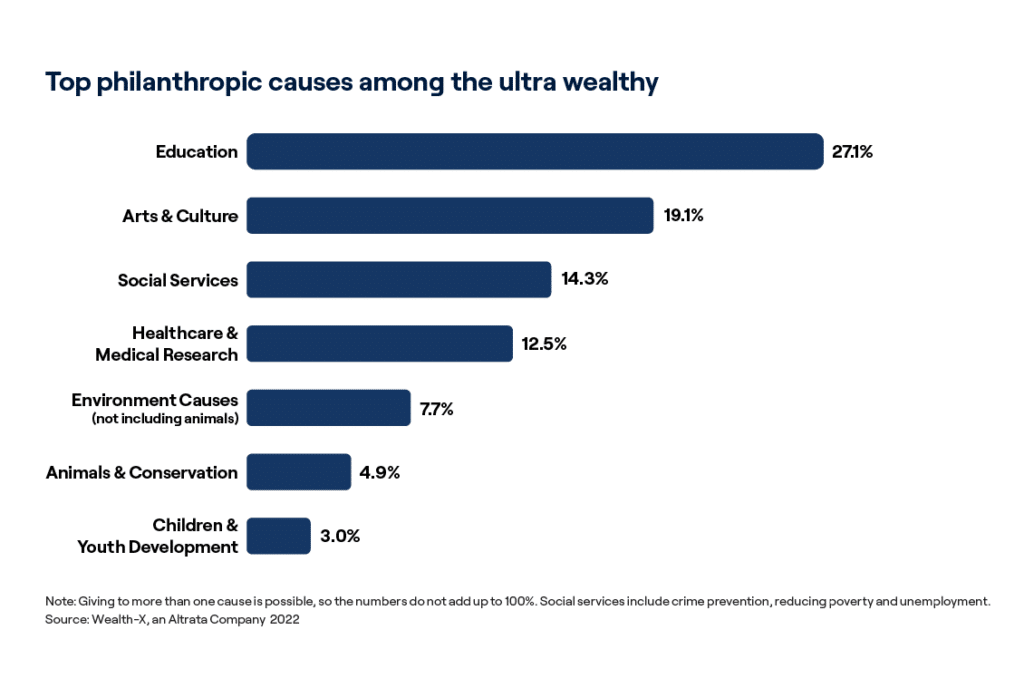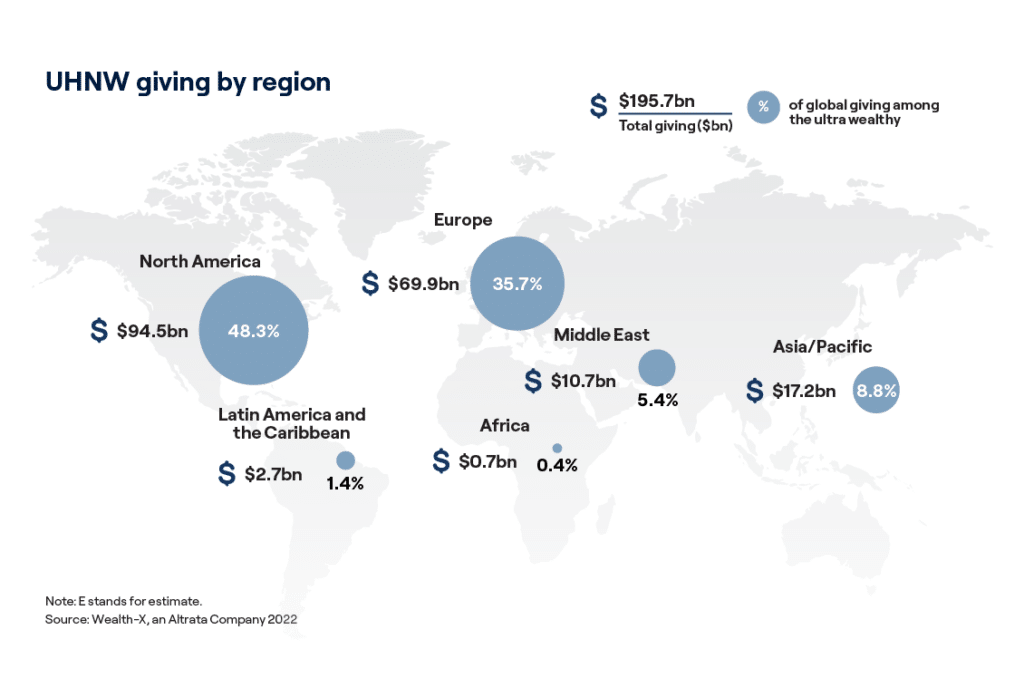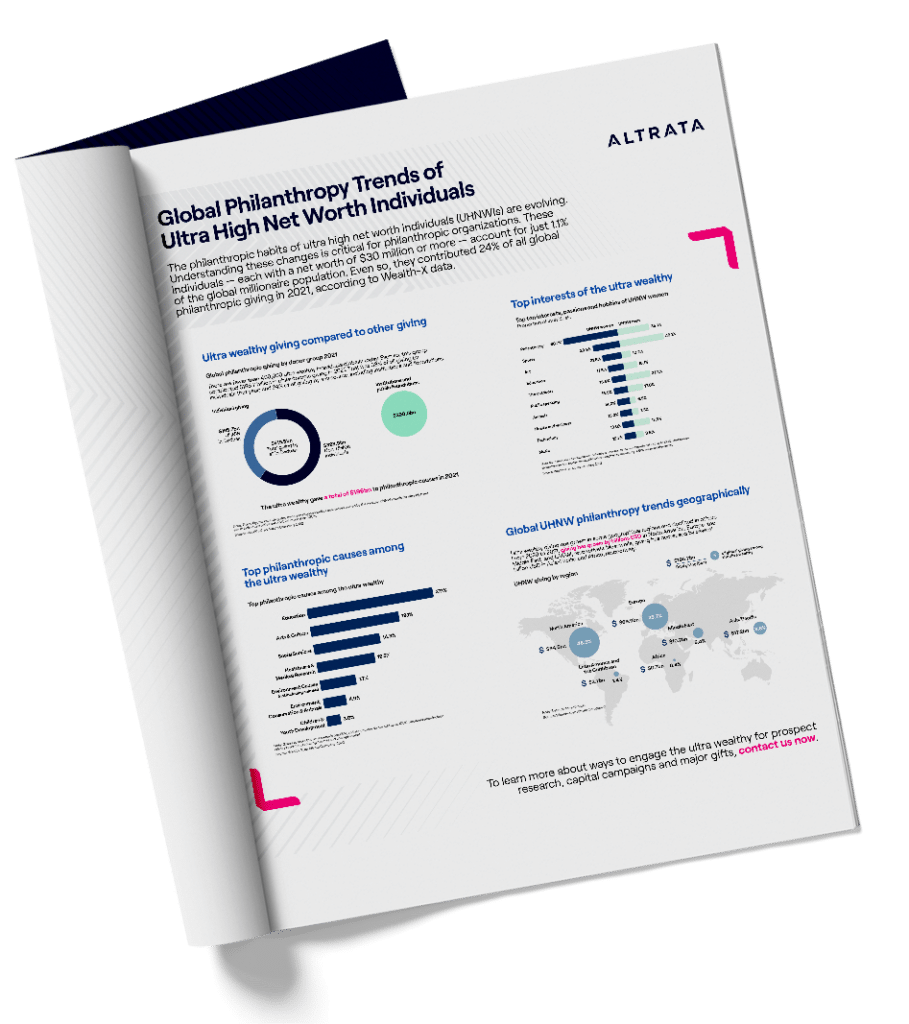While ultra High Net Worth (UHNW) individuals account for just 1.1% of the global millionaire population, they contributed 24% of all global philanthropic giving in 2021. A deep understanding of the philanthropic trends, behaviors, and preferences of this exclusive population is critical to successful fundraising strategies in the year ahead.
In the first half of 2022, the number of UHNW individuals—each with a net worth of $30 million or more—fell by 6% to 392,410. This decline, combined with economic constraints on the general population, means that nonprofit fundraisers must be prepared for increased competition when securing major gifts.
In this article, we leverage insights from Wealth-X to understand key UHNW global philanthropy trends. We explore ultra wealthy individuals’ preferred types of philanthropy, their demographics, and how they prioritize giving among their other interests.
For additional insights, readers can download our Giving Trends infographic.
How does ultra wealthy giving compare to other giving?
There are fewer than 400,000 ultra wealthy individuals globally today. Even so, this group contributed $195.7 billion in philanthropic giving in 2021. That was 38% of all giving by individuals that year; and 24% of all giving by any source, including institutions and foundations.

Meanwhile, giving from institutions or foundations accounted for roughly 36% of giving from any source that year. But many of these organizations are operated or overseen by ultra wealthy individuals. Fundraisers should take note of their decision-making power in these capacities.
UHNW global philanthropy giving will remain strong for years to come. But charitable giving per individual has not meaningfully and sustainably increased since 2020. Nonprofit fundraisers need to leverage their existing donor network and then seize upon new market opportunities.
How does philanthropy rank against other interests?
Philanthropy remains a top interest among the ultra wealthy, according to 2021 Wealth-X data. This is especially true among women. A majority of women (60.7%) counted philanthropy as a top choice among ten interests, passions, or hobbies in 2021—the only majority among any of the options. Sports was a distant second at 29.9%.

Meanwhile, only 35.1% of men considered philanthropy among their top ten; nearly half of them (49.1%) counted Sports among their top ten as well. Still, in the case of both genders, these two causes overshadow Art, Education, and the Outdoors, among others.
Top Philanthropic Causes Among the Ultra Wealthy
In 2021, education was the largest philanthropic cause among the ultra wealthy, coming in at 27%, followed by arts and culture (19%), social services (14%) and healthcare and medical research (12.5%).

How do UHNW global philanthropy trends differ geographically?
Ultra wealthy giving has grown in some geographical regions and declined in others. From 2020 to 2021, giving has grown by billions USD in North America, Europe, the Middle East, and LATAM, respectively. Meanwhile, giving has decreased by several billion USD in Asia-Pacific and Africa, respectively.

This doesn’t necessarily represent an ongoing decline in those regions. As mentioned, giving spiked throughout COVID-19. Reduced giving in 2021 in these regions may represent a return to the status quo. These regions lagged behind others before the pandemic, even on a per capita basis.
There also are systemic barriers to charitable giving among the ultra wealthy in these regions, for example, a lack of tax incentives in many Asian countries. “That’s a huge issue as people give out of their own largesse with little or no tax benefit, which as we understand is a massive incentive in North America in particular,” Alliance reports.
Even so, there are opportunities for fundraisers with the right strategic approach in these regions. “The entire NGO field must develop a different way of approaching fundraising here,” Alliance continues. “[NGOs] need persons with deep local relationships and cultural understanding to spearhead these efforts in combination with successful models from developed nations.”
How can fundraisers align with UHNW global philanthropy trends?
These 2021 trends reinforce a simple idea: nonprofits cannot rely on a linear growth model for fundraising. Insights into interests, preferences and regional giving can help sustain nonprofits when overall spending is not increasing. These insights can contribute to more robust growth during high-yield periods as well.
Access our infographic on giving trends
Download our giving trends infographic for some simple insights to start. Then, contact us directly to learn more about how an ongoing relationship with Wealth-X can help.
